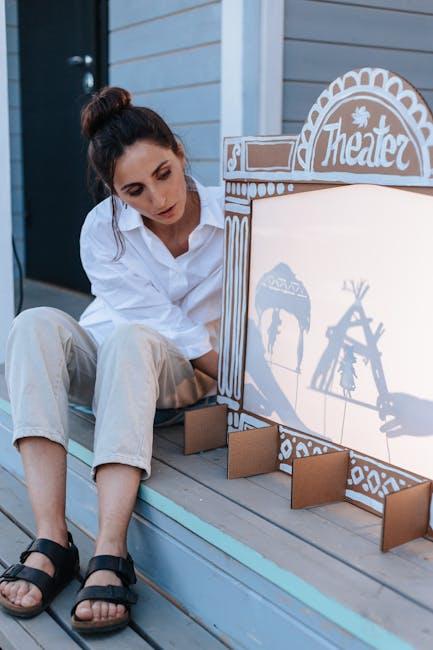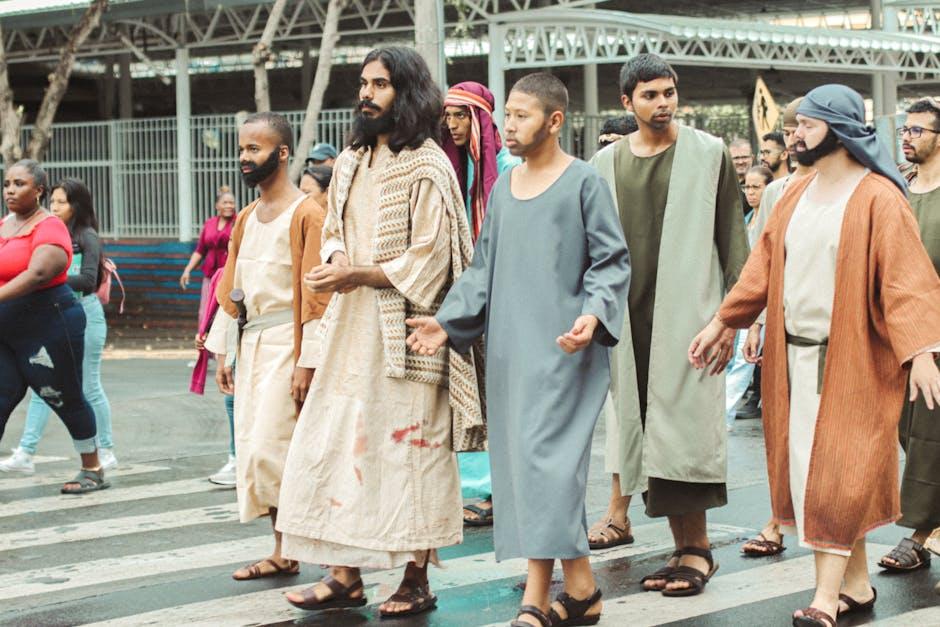In the world of filmmaking, the script is often seen as the sacred blueprint—a meticulously crafted map guiding directors, actors, and crew toward a cohesive vision. Yet, amid the controlled chaos of a film set, magic often emerges in the unlikeliest moments: a spontaneous line, an unexpected gesture, a burst of inspiration that veers off the written page. This raises a compelling question: Are these creative breakthroughs more valuable than adhering strictly to the script? In this exploration, we delve into the dynamic interplay between structure and spontaneity, examining how each contributes to the alchemy of cinematic storytelling. Join us as we unravel the delicate balance between fidelity to the script and the unpredictable brilliance that can redefine a scene.
Balancing Vision and Spontaneity on Set
On set, the art of balancing a director’s vision with the magic of spontaneity can lead to extraordinary creative breakthroughs. While a script serves as a guiding blueprint, it’s the unpredictable moments that often breathe life into a scene. Creative flexibility allows for the exploration of new ideas, offering the chance to capture genuine emotions and unexpected brilliance. Consider these elements:
- Authenticity: Allowing actors to improvise can reveal layers of character not initially scripted.
- Innovation: Spontaneous decisions might lead to unique camera angles or unexpected plot twists.
- Collaboration: Encouraging input from the entire crew can foster a richer creative environment.
However, it’s crucial to maintain a balance. Straying too far from the script may lead to confusion or disrupt the narrative flow. Therefore, successful directors often blend their vision with on-the-spot creativity, creating a dynamic and fluid storytelling process that respects the script while embracing the unexpected.

Unscripted Magic: When Improvisation Elevates Storytelling
In the realm of filmmaking, moments of unscripted brilliance often become the heart of a story, transforming scenes with an authenticity that scripted lines sometimes struggle to capture. Improvisation offers a unique spontaneity, inviting actors to explore their characters more deeply and often leading to unexpected creative breakthroughs. When actors veer off script, they tap into a raw, instinctive energy that can elevate a narrative to new heights.
Consider the following benefits of embracing improvisation on set:
- Authentic Reactions: Unplanned dialogue and actions can create genuine emotional responses, resonating more powerfully with audiences.
- Enhanced Creativity: Actors and directors are challenged to think on their feet, fostering a collaborative atmosphere where creativity flourishes.
- Character Depth: Improvisation allows actors to delve deeper into their roles, often revealing new facets of their characters that were not apparent in the script.
While scripts provide structure, it is often these unscripted moments that breathe life into a story, turning it from a planned sequence of events into a vibrant tapestry of human experience.

Navigating Creative Tensions: A Guide for Directors and Actors
On set, the dynamic between directors and actors can often lead to moments of creative tension. These tensions, while challenging, are fertile ground for innovation and discovery. Directors may find themselves at a crossroads, deciding whether to adhere strictly to the script or to embrace spontaneous breakthroughs that occur during filming. This decision can impact the film’s authenticity and emotional depth. Actors, too, must navigate these waters, balancing their interpretation of the character with the vision of the director.
- Embrace Flexibility: Allow room for improvisation, as it can lead to unexpected and powerful performances.
- Maintain Core Vision: Ensure that any creative deviations still align with the film’s overall narrative and themes.
- Foster Open Dialogue: Encourage continuous communication between directors and actors to explore ideas and resolve conflicts.
Ultimately, the key lies in finding a harmonious balance. By valuing both the script and the potential for creative breakthroughs, directors and actors can collaborate to create a piece that resonates deeply with audiences.

Crafting Flexibility: Encouraging Innovation Without Losing Focus
Balancing the spontaneous spark of creativity with the structured demands of a script is a delicate art. Directors and producers often face the challenge of integrating innovative ideas without derailing the original vision. Embracing flexibility on set can lead to unexpected moments of brilliance, yet maintaining a clear focus ensures that these moments enhance rather than distract.
- Improvisation: Allowing actors to explore their characters can unveil new dimensions, offering authenticity that scripted lines might miss.
- Collaborative Input: Crew members, from cinematographers to sound designers, bring unique perspectives that can transform a scene.
- Adaptive Storytelling: Shifting plot elements to accommodate new ideas can enrich the narrative, provided they align with the core theme.
The key lies in crafting a creative environment that welcomes innovation while anchoring these ideas to the storyline’s essence. By doing so, the production can harness the best of both worlds, creating a film that resonates with originality and coherence.

